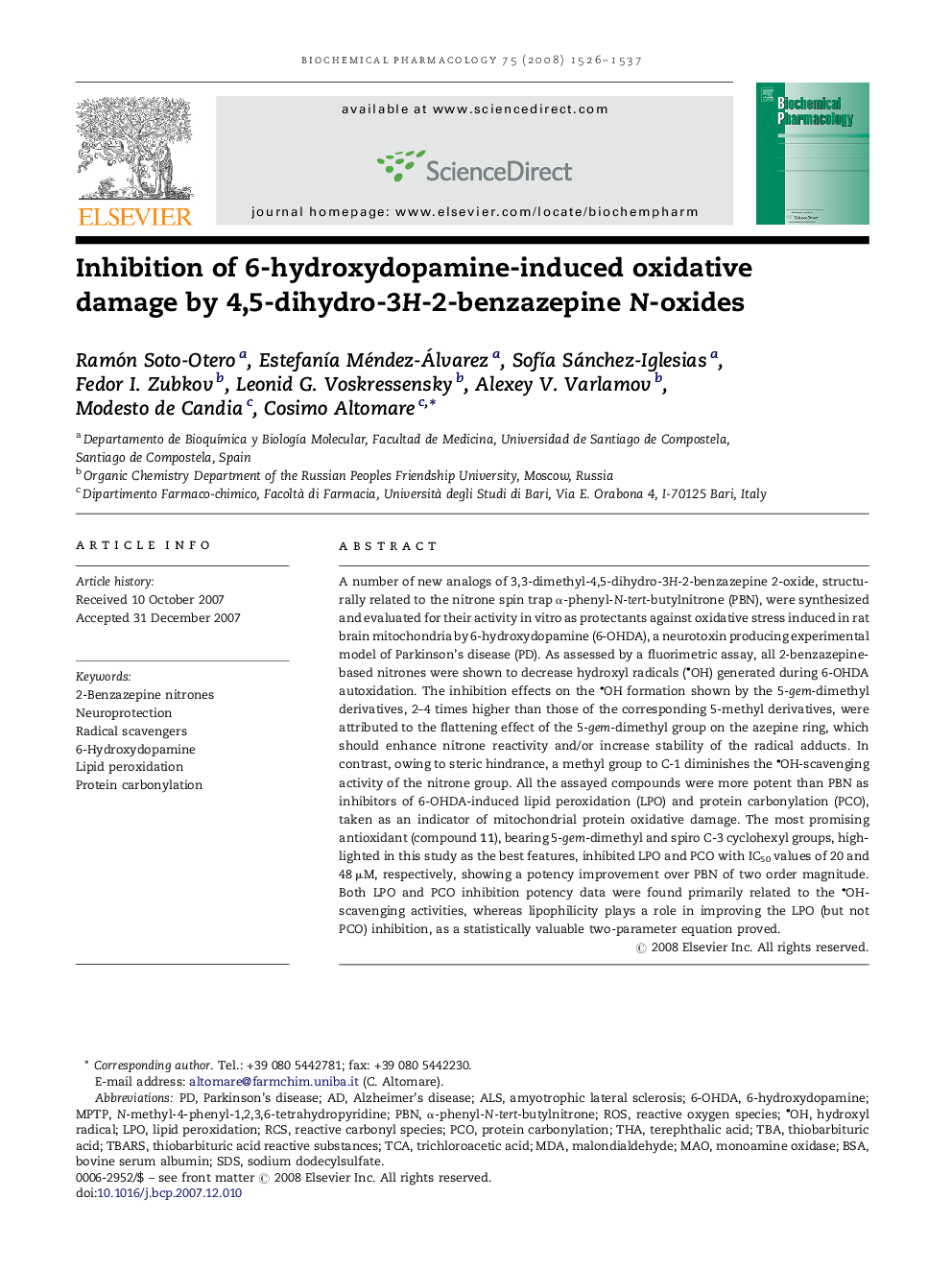| Article ID | Journal | Published Year | Pages | File Type |
|---|---|---|---|---|
| 5824356 | Biochemical Pharmacology | 2008 | 12 Pages |
Abstract
A number of new analogs of 3,3-dimethyl-4,5-dihydro-3H-2-benzazepine 2-oxide, structurally related to the nitrone spin trap α-phenyl-N-tert-butylnitrone (PBN), were synthesized and evaluated for their activity in vitro as protectants against oxidative stress induced in rat brain mitochondria by 6-hydroxydopamine (6-OHDA), a neurotoxin producing experimental model of Parkinson's disease (PD). As assessed by a fluorimetric assay, all 2-benzazepine-based nitrones were shown to decrease hydroxyl radicals (OH) generated during 6-OHDA autoxidation. The inhibition effects on the OH formation shown by the 5-gem-dimethyl derivatives, 2-4 times higher than those of the corresponding 5-methyl derivatives, were attributed to the flattening effect of the 5-gem-dimethyl group on the azepine ring, which should enhance nitrone reactivity and/or increase stability of the radical adducts. In contrast, owing to steric hindrance, a methyl group to C-1 diminishes the OH-scavenging activity of the nitrone group. All the assayed compounds were more potent than PBN as inhibitors of 6-OHDA-induced lipid peroxidation (LPO) and protein carbonylation (PCO), taken as an indicator of mitochondrial protein oxidative damage. The most promising antioxidant (compound 11), bearing 5-gem-dimethyl and spiro C-3 cyclohexyl groups, highlighted in this study as the best features, inhibited LPO and PCO with IC50 values of 20 and 48 μM, respectively, showing a potency improvement over PBN of two order magnitude. Both LPO and PCO inhibition potency data were found primarily related to the OH-scavenging activities, whereas lipophilicity plays a role in improving the LPO (but not PCO) inhibition, as a statistically valuable two-parameter equation proved.
Keywords
TBARSα-phenyl-N-tert-butylnitroneMDAPBNPCORCSTHAMAOMPTPLPO6-HydroxydopamineTCA6-OHDATBASDSBSAN-methyl-4-phenyl-1,2,3,6-tetrahydropyridineROSbovine serum albuminamyotrophic lateral sclerosisTerephthalic acidtrichloroacetic acidThiobarbituric acidAlzheimer's diseaseALSParkinson's diseaseRadical scavengersHydroxyl radicalsodium dodecylsulfatemalondialdehydeNeuroprotectionthiobarbituric acid reactive substancesmonoamine oxidaseLipid peroxidationProtein carbonylationreactive carbonyl speciesReactive oxygen species
Related Topics
Health Sciences
Pharmacology, Toxicology and Pharmaceutical Science
Pharmacology
Authors
Ramón Soto-Otero, EstefanÃa Méndez-Álvarez, SofÃa Sánchez-Iglesias, Fedor I. Zubkov, Leonid G. Voskressensky, Alexey V. Varlamov, Modesto de Candia, Cosimo Altomare,
